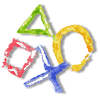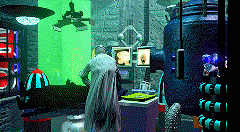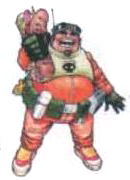Brains in Planes: Difference between revisions
DansFriend (talk | contribs) |
DansFriend (talk | contribs) No edit summary |
||
| Line 6: | Line 6: | ||
In a 23rd century dystopia of peace, harmony and total boredom, outlaw racers get their kicks from racing ultra-fast planes around the cities of the future. However, because the human body can't withstand the extreme G-force, the racers must remove their brains and plug them into the craft's circuitry while the rest of their bodies are artificially kept alive.<ref name="Edge"/><ref name="PCSpiel"/> | In a 23rd century dystopia of peace, harmony and total boredom, outlaw racers get their kicks from racing ultra-fast planes around the cities of the future. However, because the human body can't withstand the extreme G-force, the racers must remove their brains and plug them into the craft's circuitry while the rest of their bodies are artificially kept alive.<ref name="Edge"/><ref name="PCSpiel"/> | ||
==Development== | ==Development== | ||
The game was being produced by [[Kevin Bull]].<ref name="PCSpiel"/> The art style of the game was inspired by comics like [[wikipedia:Judge Dredd|Judge Dredd]] and [[wikipedia:Tank Girl|Tank Girl]]. The studio hired British comic book artist [[wikipedia:Philip Bond|Philip Bond]], who worked on said comics, to design the game's look.<ref name="PCSpiel"/> Bond designed the characters, each with their unique ship, as well as some of the game's cities.<ref name="PCSpiel"/> | [[File:BrainsInPlanes-Racer-Art.png|Art by Philip Bond.|right|thumb]]The game was being produced by [[Kevin Bull]].<ref name="PCSpiel"/> The art style of the game was inspired by comics like [[wikipedia:Judge Dredd|Judge Dredd]] and [[wikipedia:Tank Girl|Tank Girl]]. The studio hired British comic book artist [[wikipedia:Philip Bond|Philip Bond]], who worked on said comics, to design the game's look.<ref name="PCSpiel"/> Bond designed the characters, each with their unique ship, as well as some of the game's cities.<ref name="PCSpiel"/> | ||
In late 1996, the first race track of the game was still being tested on [[wikipedia:Autodesk Alias|Alias]], but the team felt confident that their 3D libraries would deliver "an awesome visual experience."<ref name="Edge"/> All the planes were to be generated on [[wikipedia:Silicon Graphics|SGI]] machines, and were to be tracked in-game by a selection of three third-person camera positions. Anything that could obstruct the player's view was going to be rendered in transparent polygons, so vision would remain unimpaired. The crudity of depth shading was to be avoided by constructing 3D maps in order to limit the viewable distance from any point on the map. Graphical effects were to include a particle system allowing for spectacular explosions, fountains, exhaust streams; multiple light sources and lens flare; and a dazzling chrome effect to be achieved through the use of environment mapping within the graphics API.<ref name="Edge"/> | In late 1996, the first race track of the game was still being tested on [[wikipedia:Autodesk Alias|Alias]], but the team felt confident that their 3D libraries would deliver "an awesome visual experience."<ref name="Edge"/> All the planes were to be generated on [[wikipedia:Silicon Graphics|SGI]] machines, and were to be tracked in-game by a selection of three third-person camera positions. Anything that could obstruct the player's view was going to be rendered in transparent polygons, so vision would remain unimpaired.<ref name="Edge"/> The crudity of depth shading was to be avoided by constructing 3D maps in order to limit the viewable distance from any point on the map.<ref name="Edge"/> Graphical effects were to include a particle system allowing for spectacular explosions, fountains, exhaust streams; multiple light sources and lens flare; and a dazzling chrome effect to be achieved through the use of environment mapping within the graphics API.<ref name="Edge"/> | ||
==Gallery== | ==Gallery== | ||
===Artwork=== | ===Artwork=== | ||
<gallery> | <gallery> | ||
BrainsInPlanes-Plane-Artwork.png|Art by Philip Bond. | |||
BrainsInPlanes-Plane-Artwork.png | |||
</gallery> | </gallery> | ||
===Renders=== | ===Renders=== | ||
Revision as of 21:06, 22 July 2023
Brains in Planes, also known as Headrush, is a cancelled 3D racing video game that was being developed by Millennium Interactive in 1996. The game was due to be released on the PlayStation as well as Windows 95.[1] Several previews of the game were published in magazines and on CDs featuring concept art and CGI.
Gameplay
The game was going to have at least six circuits with multiple routes, shortcuts and horizontal and vertical hazards such as pedestrians, police vehicles and other moving scenery. There were going to be multiplayer, tag, battle and time trial game modes.[1] Attempting to cheat during the races would have resulted in the activation of a self-destruct mechanism, which would have permanently removed the plane and the brain from the circuit.[2]
Plot
In a 23rd century dystopia of peace, harmony and total boredom, outlaw racers get their kicks from racing ultra-fast planes around the cities of the future. However, because the human body can't withstand the extreme G-force, the racers must remove their brains and plug them into the craft's circuitry while the rest of their bodies are artificially kept alive.[1][2]
Development
The game was being produced by Kevin Bull.[2] The art style of the game was inspired by comics like Judge Dredd and Tank Girl. The studio hired British comic book artist Philip Bond, who worked on said comics, to design the game's look.[2] Bond designed the characters, each with their unique ship, as well as some of the game's cities.[2]
In late 1996, the first race track of the game was still being tested on Alias, but the team felt confident that their 3D libraries would deliver "an awesome visual experience."[1] All the planes were to be generated on SGI machines, and were to be tracked in-game by a selection of three third-person camera positions. Anything that could obstruct the player's view was going to be rendered in transparent polygons, so vision would remain unimpaired.[1] The crudity of depth shading was to be avoided by constructing 3D maps in order to limit the viewable distance from any point on the map.[1] Graphical effects were to include a particle system allowing for spectacular explosions, fountains, exhaust streams; multiple light sources and lens flare; and a dazzling chrome effect to be achieved through the use of environment mapping within the graphics API.[1]







